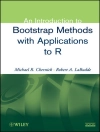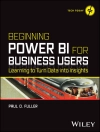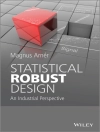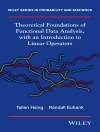This book is a comprehensive exploration of the interplay between Stochastic Analysis, Geometry, and Partial Differential Equations (PDEs). It aims to investigate the influence of geometry on diffusions induced by underlying structures, such as Riemannian or sub-Riemannian geometries, and examine the implications for solving problems in PDEs, mathematical finance, and related fields. The book aims to unify the relationships between PDEs, nonholonomic geometry, and stochastic processes, focusing on a specific condition shared by these areas known as the bracket-generating condition or Hörmander’s condition. The main objectives of the book are:
The intended audience for this book includes researchers and practitioners in mathematics, physics, and engineering, who are interested in stochastic techniques applied to geometry and PDEs, as well as their applications in mathematical finance and electrical circuits.
Contents:
- Topics of Stochastic Calculus
- Stochastic Geometry in Euclidean Space
- Hypoelliptic Operators
- Heat Kernels with Applications
- Fundamental Solutions
- Elliptic Diffusions
- Sub-Elliptic Diffusions
- Systems of Sub-Elliptic Differential Equations
- Applications to LC-Circuits
Readership: Advanced undergraduate and graduate students, researchers and practitioners in the fields of mathematics, physics, and engineering who are interested in the application of stochastic techniques in geometry and PDEs and how it relates to mathematical finance and electrical circuits.
Key Features:
- Comprehensive Coverage: The book offers a thorough exploration of the intersection of Stochastic Analysis, Geometry, and Partial Differential Equations (PDEs), covering both theory and applications. It provides a comprehensive understanding of the topic and its various aspects
- Unifying Approach: The book aims to unify the relationships between PDEs, nonholonomic geometry, and stochastic processes. It explores the connections and common conditions shared by these areas, such as the bracket-generating condition or Hörmander’s condition. This unifying approach sets it apart from other books in the field
- Unique Focus on Geometry and Diffusions: The book emphasizes the study of diffusions induced by underlying geometric structures, including Riemannian and sub-Riemannian geometries. It delves into how geometry shapes and influences the behavior of these diffusions, providing insights into the interplay between geometry and stochastic analysis
- Computational Emphasis: The book places a strong emphasis on the computation of heat kernels and fundamental solutions for various operators. It provides explicit forms of these solutions, enabling readers to analyze and apply them in practical settings
- Applications in Diverse Fields: The book goes beyond pure mathematics and explores applications in mathematical finance, electrical circuits (LC-circuits), and other relevant fields. This interdisciplinary approach enhances its value and relevance to a wide range of readers
- Practical Examples and Physical Interpretations: The book presents numerous practical examples of diffusions and computes their transition probabilities. It also provides physical interpretations of the obtained formulas, making the content more relatable and applicable to real-world scenarios
- Clear and Accessible Exposition: The book offers a clear and accessible exposition of the subject matter, making it suitable for both researchers and practitioners in mathematics, physics, and engineering. It includes necessary background material and important results, ensuring readers can follow the content even without extensive prior knowledge
- Timeliness and Topicality: The book addresses current issues in stochastic analysis, geometry, and PDEs, making it highly topical and relevant. It explores cutting-edge advancements in the field and provides insights into emerging research directions
- Value-Added Features: The book includes value-added features such as end-of-chapter summaries, end-of-chapter Exercises, the variational approach to LC-circuits, stochastic interpretations of dynamics, and connections to other fields like mathematical finance. These features enhance the book’s practicality, applicability, and appeal to a wide readership












